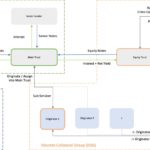
Negative Interest Rates Open Doors To Funding Opportunities
As economies across the globe look for stimulus and governments try to reduce deficits, there is increasing talk (and implementation of) extreme monetary policies. Whilst it might raise red flags on the state of a country’s economy, changes in monetary policies are opening doors for businesses seeking new investment opportunities.
Money’s Cheap
We’ve already seen interest rates get lower, as central banks look to increase borrowing and spending. Low-interest rates mean mortgages and other loans become cheaper, whilst saving money in a bank becomes less appealing, as it doesn’t earn as much interest.
If the government needs to boost spending, the central bank will reduce the interest rates with the aim of seeing a flurry of economic activity, since “money is cheap.” Whilst it has been an effective strategy in the past, we’ve entered a period of interest rate decline. We’re now seeing negative interest rates – whereby money deposited in a bank can be charged interest rather than earning it – and banks can actually pay individuals to borrow money.
Germany, Switzerland and Japan have all deployed this unconventional monetary policy to increase economic stimulus. Although they haven’t yet rolled this out in retail offerings, for example, mortgage rates are still above zero, this is about to change.
Denmark has gone one step further and is offering the world’s first negative interest rate in its retail banking products. This means that each month the balance of the loan will be reduced by the amount of the negative interest rate. You are literally being paid to borrow money!
Time To Follow The Guy Wearing The Aluminium Foil Hat And Stash Your Cash
Whilst negative interest rates make borrowing money appealing, saving it is another matter, as banks will start charging you for the privilege of taking your money. That guy wearing the aluminium foil hat telling you to stash your money under the bed may actually be offering a better financial strategy than giving it to the bank (setting aside arguments of security, convenience etc).
This will impact businesses in a couple of ways. Firstly, saving any profits for a rainy day will lose your business money right now, as inflation and the cost of living continues to outpace the low interest you can make on that money. So, unless you have a huge bed to stash your cash, it’s best to invest this money into your business and watch it grow (and increase in value).
This same issue is also impacting investors, in particular, pension and sovereign wealth funds that are some of the largest holders of deposits / commercial paper. Such funds definitely do not have a large enough bed to consider this as an option.
These funds are entrusted to recover a yield above inflation rates to preserve and grow the wealth of their members/nation states. This is generally achieved by a mix of equities, fixed income and cash. The problem is, equities are back at all-time highs and relatively fully valued. Cash is generating negligible to negative returns.
This leaves fixed income on alternative assets that guarantee an absolute return. On average, pension funds in developed markets increased their allocation from 7.2% to 11.8% from 2008 to 2017, a 63% increase. Whilst statistics are not available more recently, anecdotal discussions with investors has indicated that this shift is accelerating.
A Once In A Generation Growth Opportunity
These alternative asset managers include private equity, credit funds, absolute return funds and hedge funds. Although private equity continues to form the bulk of this asset class, it has been the credit funds that have been the biggest beneficiaries of the low-interest-rate environment, as they offer a risk protected fixed yield that is considerably above inflation targets. Additionally, they have considerable funds that remain undeployed and have further funds to deploy given the current market conditions.
This is opening the door to a once in a generation growth opportunity for mid-market businesses in Australia and New Zealand (>A$5m EBITA). These businesses fall within the mandate of Asian focused funds but are the preferred investment option given the stable legal and political environment.
For businesses, these credit funds represent an amazing opportunity to gain access and partner with institutional global funders. Not only do they operate at risk appetites that are far beyond traditional banks, giving you the opportunity to be more adventurous with your growth strategy, but their yields are also coming under downward pressure making them an affordable option.
Although credit fund investors formerly played a role in the capital structure, which was a hybrid between debt and equity, and targeted total returns c.15 per cent, some funds are now accepting returns in the high single digits with less or no equity required. This is considerably cheaper on a weighted average cost of capital basis to a bank and equity approach. Furthermore, there is less need to part with any equity, meaning you do not need to relinquish any control over the company.



